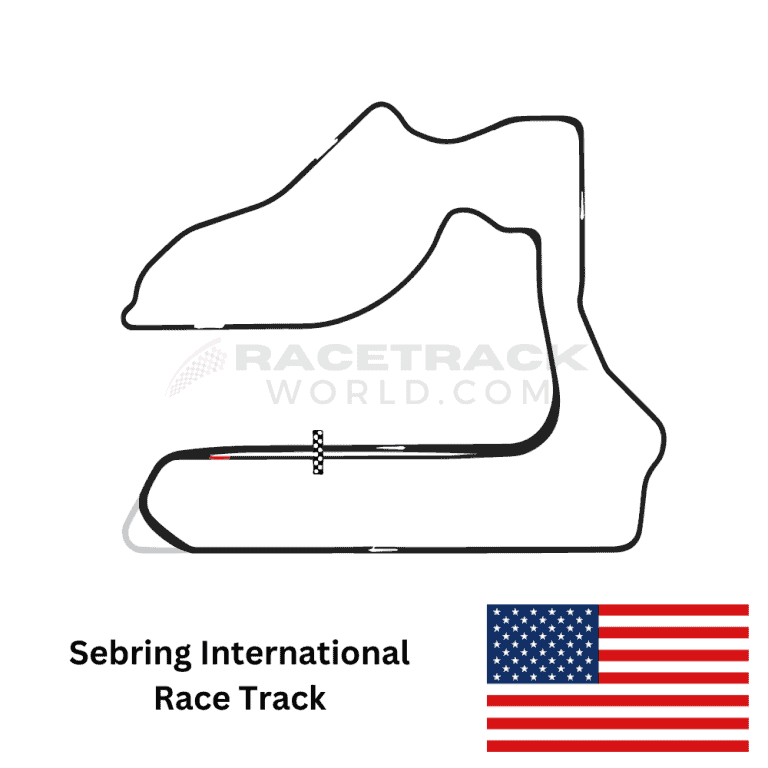Sebring International Raceway Info

Hotels near Sebring International Raceway
Sebring International Raceway History
Sebring International Raceway is a legendary motor racing venue nestled in Sebring, Florida, USA. This iconic track has witnessed some of the world's most prestigious racing events, notably the 12 Hours of Sebring, an integral part of the FIA World Endurance Championship and the IMSA WeatherTech SportsCar Championship. In this article, we'll delve deeper into the history of Sebring International Raceway, explore its challenging track layout, and also provide you with information about nearby hotels for your stay during race events.
A Glimpse into History
Sebring International Raceway boasts a rich and storied history, dating back to the 1950s. Its origins are rooted in the transformation of a former U.S. Army Air Forces training base in 1950, which culminated in the inaugural race being held just a year later. This first event was a six-hour endurance race, and it witnessed the XK120 Jaguar, piloted by Sam Collier and Phil Walters, clinching victory.
The Birth of a Legend
The track rapidly earned the admiration of racing enthusiasts and was subsequently chosen to host the grueling 12 Hours of Sebring in 1952. The race tests the limits of both drivers and their machines. In its debut, the team of Phil Walters and Bill France Sr., driving a Cunningham C4-R, claimed victory, cementing the track's reputation.
Evolution and Renovations
Throughout the years, Sebring International Raceway underwent several transformations and upgrades to meet the ever-evolving demands of modern racing. In 2019, the track found new ownership under the Sebring International Raceway, LLC, a subsidiary of HSR Sebring, LLC, ushering in a fresh era for the circuit. Ambitious plans for further renovations and enhancements are now in the pipeline.
Navigating the Challenge
Sebring International Raceway is home to a 3.74-mile, 17-turn road course renowned for its mix of long straights, tight corners, and challenging elevation changes. The track's unique character is a result of incorporating former airbase runways and taxiways into its layout, making it an even more formidable challenge for drivers.
The layout of the track is thoughtfully designed to push both driver and machine to their limits. It features lengthy straightaways, allowing drivers to reach astonishing speeds, while also introducing challenging corners and chicanes that demand precision and skill.
One of the most iconic sections of the track is the Hairpin Turn, a sharp, 180-degree bend that leads onto the long back straightaway. This section is famous for its prime passing opportunities, where the fate of many races is decided.
Another demanding part of the circuit is the Esses, a series of fast, sweeping corners that require drivers to maintain high speeds while skillfully navigating through the turns. The Esses are particularly tough on tires and often play a decisive role in race outcomes.
The Unique Charm of Sebring
What sets Sebring International Raceway apart from the rest is its captivating location on a former airbase, lending it a distinct character and atmosphere. The incorporation of airbase runways and taxiways into the track layout adds an extra layer of excitement and challenge to the racing experience.
Furthermore, Sebring International Raceway is renowned for hosting some of the most demanding endurance races globally, with the 12 Hours of Sebring at the forefront. These races place extraordinary demands on both drivers and their vehicles, necessitating a unique blend of skill, endurance, and strategy for success.
The 12 Hours of Sebring holds a special place in the world of motorsports, being part of the coveted Triple Crown of Endurance Racing, which also includes the 24 Hours of Le Mans and the Rolex 24 at Daytona. Winning all three races is an ultimate achievement in endurance racing and is recognized as the Endurance Triple Crown.
Where to Stay
As you prepare to experience the excitement of Sebring International Raceway, it's essential to know where you can stay during the events. Several hotels are conveniently located near the track to ensure you have a comfortable and enjoyable stay. Here are a few options:
- Sebring Inn – A budget-friendly option just a stone's throw from the circuit, making it an excellent choice for race enthusiasts.
- Sebring International Hotel – A mid-range hotel offering modern amenities and a welcoming atmosphere for a relaxing stay.
- Sebring Luxury Resort – For those seeking a touch of luxury, this upscale resort provides top-tier accommodations and a range of amenities.
Ensure to book your stay well in advance to secure your place and make the most of your visit to Sebring International Raceway.
Prepare to immerse yourself in the world of motorsports at Sebring International Raceway, where history, challenge, and excitement collide on the legendary racetrack. Don't miss out on the opportunity to witness racing greatness while enjoying a comfortable stay at one of the nearby hotels.
